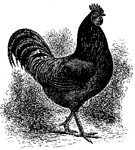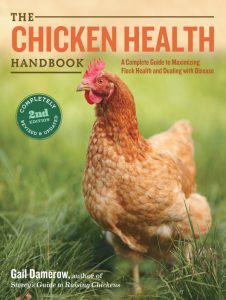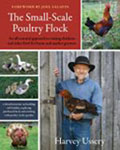
Breed Facts
Status:
Critical
Use:
Eggs, Meat
Egg Color:
White to Tinted
Egg Size:
Medium to Large
Weight:
Male 8 lbs. / Female 6 lbs.
Temperament:
Active
Characteristics:
Good foraging ability; hardiness, especially in extreme heat conditions
CATALANA CHICKEN
The Catalana chicken was developed in Catalonia, Spain, near Barcelona. It takes its name from Catalonia and is sometimes referred to as the “Prat,” in honor of a farming area of El Prat de Llobregat (commonly known as “El Prat”) which is located southwest of Barcelona. The Spanish name for the breed is Catalana del Prat Leonada.
The breed was developed over a long period of time using the landrace fowls of the area, likely Castilian chickens, mixed with Asian stock during the second half of the nineteenth century. It’s unclear if the Asian stock were Cochin chickens or Cochin-China chickens from what is now Vietnam – the latter being the common dual-purpose landrace chickens found around Asian seaports during this time period. (Spain, being a sailing nation, certainly had access to both.)
The breed was introduced to the rest of the world at the 1902 World’s Fair in Madrid, Spain. The Catalana chicken attracted a limited following in the United States and Canada, and in 1949 was admitted to the APA Standard of Perfection in America as a recognized breed. It is still rare in the United States today.
Due to its heat tolerance, the breed became more popular in Latin America. During the 1920s, the breed was successfully used in the commercial industry in Argentina. In fact, in 1998 an Argentine man brought hatching eggs to the 10,000-bird show held in Columbus, Ohio. His family was still using the Catalana commercially and he made the eggs available to help spread the breed. Several poultry fanciers secured birds from this importation.
They have rich buff plumage, ranging from a light tan buff to a more red-gold buff. Both sexes have black tails that may shimmer green, with males also having an iridescent green sheen on their sickles and a reddish buff color in their hackles, back, and saddle feathers. Chicks are hardy and are a buffish color, sometimes akin to a faint chipmunk pattern along their backs. (In Spain, a white variety of Catalana is recognized in addition to the buff.)
Catalana chickens should have medium-large wattles and white ear lobes, large red combs that lop over in the females, reddish bay eyes, bluish slate shanks and toes, pinkish-white skin, and light horn-colored beaks. Hens have medium-size single combs that may flop over; roosters have large single combs with six upright points. Males weigh 8 lbs. and females 6 lbs.
They are a dual-purpose breed. Cockerels and cull layers are noted for having very good carcasses and succulent meat. Cockerels are also used in the production of quality capons in Spain. They lay about 200-240 white to light pink medium/large eggs per year, but typical of most Mediterranean breeds, they are not broody.
This breed has the style, alertness, activity, and foraging ability typical of Mediterranean chickens. They are not the best breed if you want a pet as they don’t like to be handled. You may be able to tame them some, but you will be working against their nature. They can fly and like to roost in high places. They do not like to be confined and do best if they are allowed to roam and look for food. They are a good breed for homesteaders who live in hot climates as they thrive in even extreme heat.
Did you know:
Commercial food production relies on only a handful of livestock and poultry breeds. The biodiversity represented in the breeds protected by The Livestock Conservancy is needed to safeguard the future of agriculture in a changing world.

Breed Facts
Status:
Watch
Use:
Eggs, Meat
Egg Color:
White to Tinted
Egg Size:
Medium
Market Weight:
5 – 6.5 lbs
Temperament:
Active
Characteristics:
Good foraging ability, hardiness especially in extreme heat conditions
You may be interested in…



